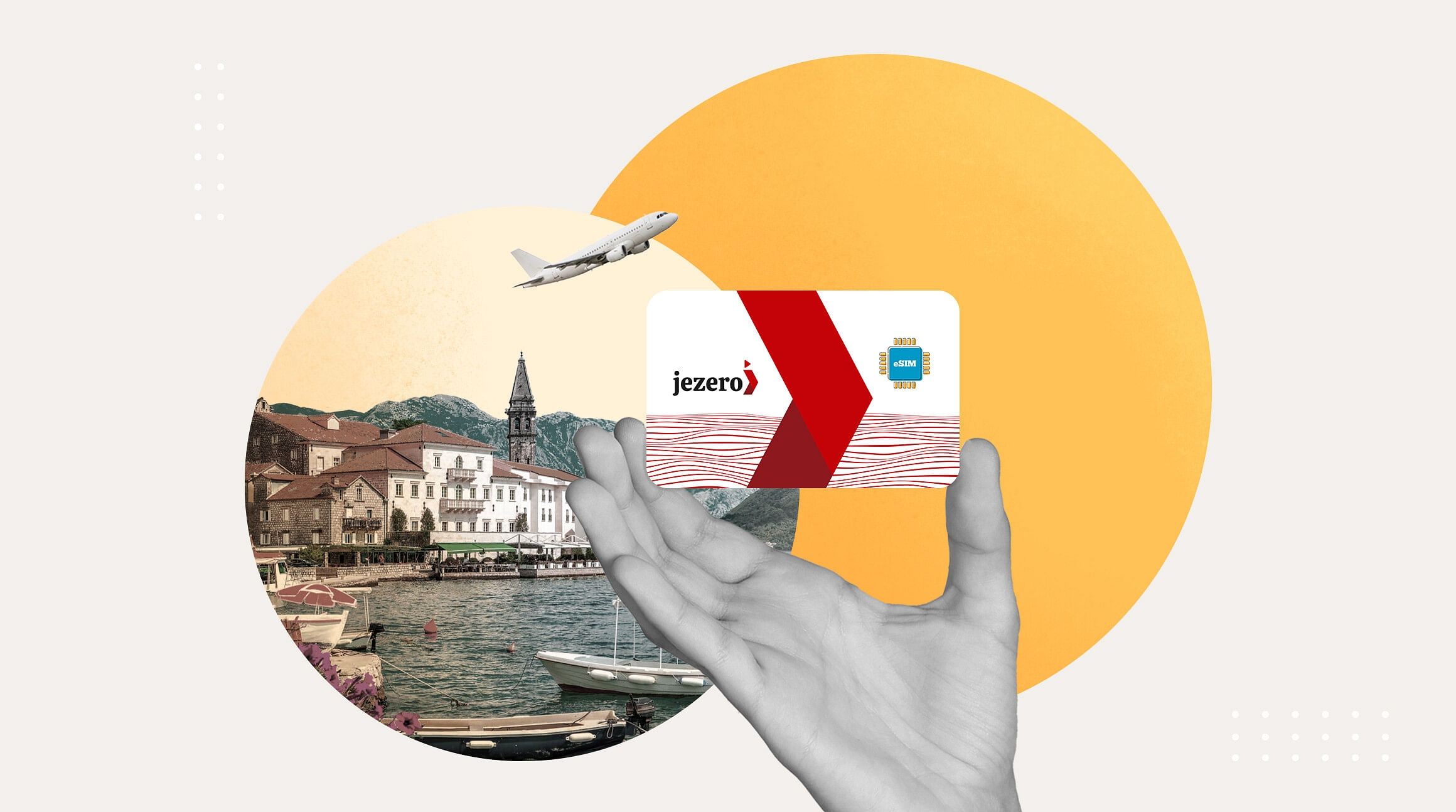
Montenegro, or the "Black Mountain," is nestled on the Adriatic coast and stands out as one of Europe's most stunning travel destinations. Montenegro boasts incredible natural diversity despite its small size, from towering mountains and pristine beaches to deep lakes and flowing rivers. It's a paradise for nature lovers, adventure seekers, and those seeking peace and relaxation. Some of the top attractions in Montenegro include the Bay of Kotor, Durmitor National Park, and the charming town of Budva. This guide offers everything you need to know about visiting Montenegro, from the best travel times to essential tips for ensuring your trip is perfect and exciting.
Before embarking on your journey, remember to get an eSIM from Airalo. It offers seamless connectivity at affordable rates, ensuring you don't have to worry about outrageous roaming fees. Stay connected while you explore, relax, and enjoy an unparalleled adventure in Montenegro, feeling financially savvy and in control of your budget.
Here's what this guide covers:
- The Best Time to Visit Montenegro
- Top Tourist Attractions in Montenegro
- Top 10 Activities to Do in Montenegro
- Essential Travel Tips for Montenegro
- Must-Have Essentials Before Visiting Montenegro
- Top FAQs About Traveling to Montenegro
- Montenegro eSIM: Stay Connected with Airalo
The Best Time to Visit Montenegro
Spring (April to June)
Spring is one of the best times to visit Montenegro. Temperatures gradually warm up, offering mild and comfortable weather. Flowers bloom, and nature flourishes, making it perfect for hiking and exploring the countryside and national parks.
Summer (July to September)
Summer is the peak tourist season, especially along the Adriatic coast. Temperatures range between 77°F and 95°F (25°C to 35°C). Beaches buzz with visitors, and coastal towns like Budva and Kotor live with festivals and cultural events.
Autumn (October to November)
Autumn brings more extraordinary, mild weather and fewer crowds. This is an ideal time to enjoy Montenegro's stunning landscapes as the foliage turns vibrant shades of yellow and orange. Additionally, travel costs tend to be more budget-friendly.
Winter (December to March)
Winter transforms Montenegro's mountain regions, such as Kolasin and Zabljak, into skiing havens. If you love winter sports, this is the perfect time to hit the slopes and enjoy the snowy landscapes.
Related: Georgia Travel Guide: Everything You Need To Know
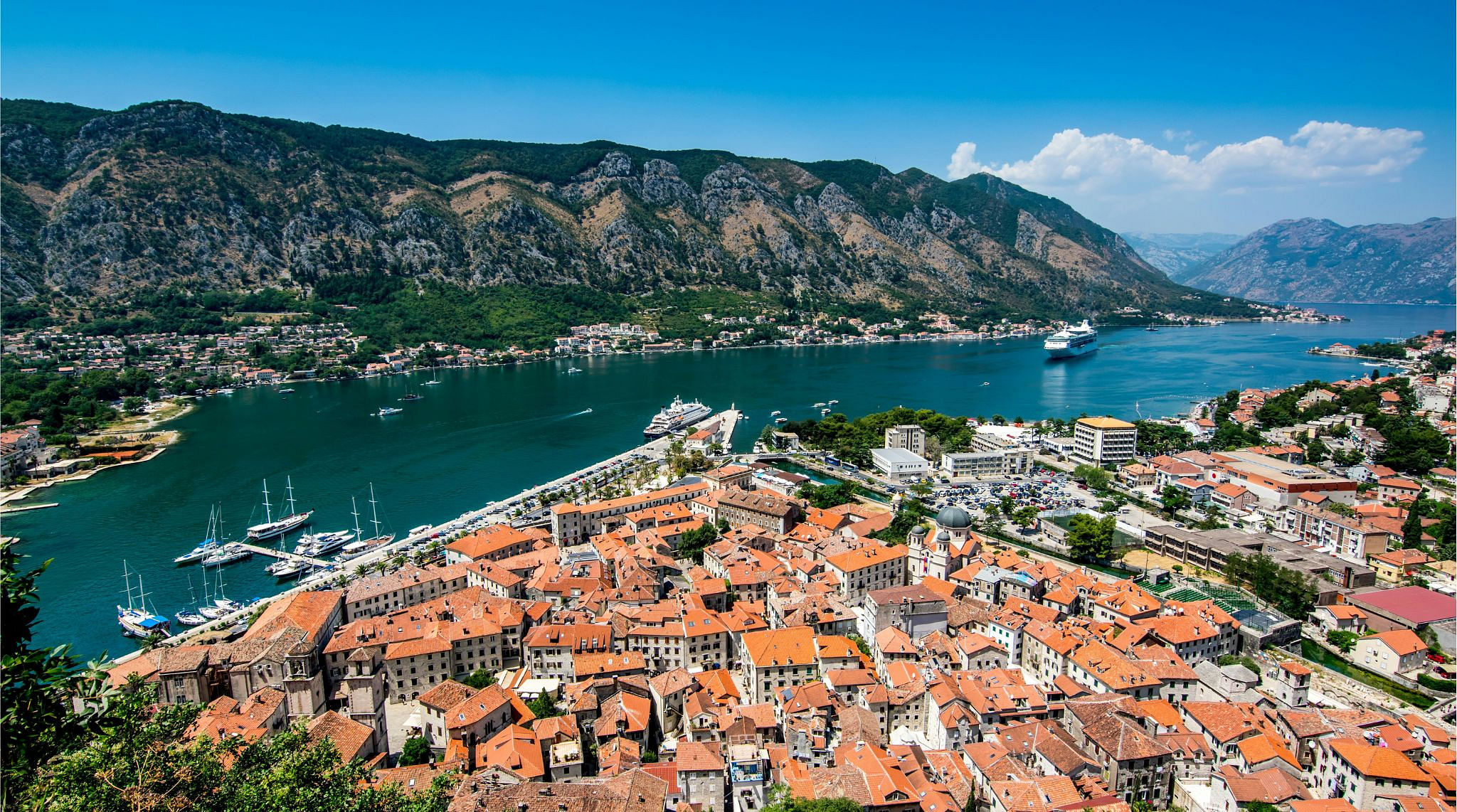 Unsplash
Unsplash
Top Tourist Attractions in Montenegro
Budva
Budva is one of Montenegro's oldest cities and a prime destination along the Adriatic coast. It's famed for its sandy beaches and vibrant nightlife. The old town features narrow cobblestone streets and historic stone buildings, while Budva Fortress offers breathtaking sea views.
Kotor
This UNESCO World Heritage Site is a must-see in the Bay of Kotor. Ancient walls surround its medieval old town, boasting historic churches and charming streets. Hike up to San Giovanni Fortress for panoramic views of the bay.
Lake Skadar
Lake Skadar, the largest lake in the Balkans, is a nature lover's dream. Surrounded by mountains, it's a haven for wildlife and offers boat tours, hiking trails, and stunning views.
Mount Lovcen
Part of Lovcen National Park, this mountain is a top spot for adventure seekers. Drive along winding roads to Njegos Mausoleum at the summit for unparalleled views. It's also a favorite for hiking and photography.
Tara Canyon
The Tara River forms Europe's deepest canyon, a paradise for thrill-seekers. Activities include rafting, kayaking, and scenic hikes, offering unforgettable encounters with Montenegro's natural beauty.
Related: Traveling to France from Dubai: Your Ultimate Guide
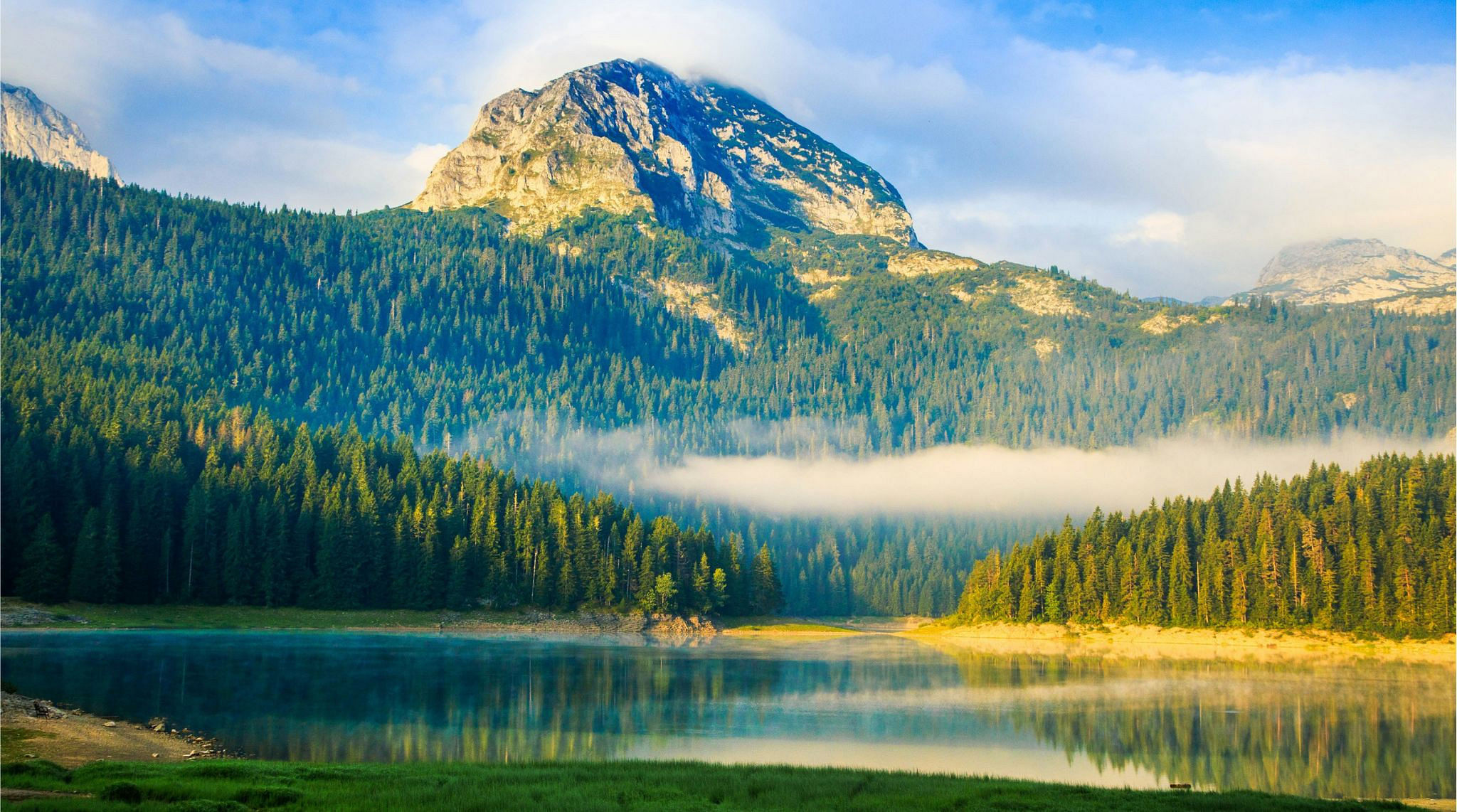 Unsplash
Unsplash
Top 10 Activities to Do in Montenegro
Montenegro is a paradise for adventure seekers and nature lovers alike, offering an incredible range of activities that allow you to explore its stunning landscapes, rich history, and vibrant culture. Whether you're looking to hike through lush mountains, relax on pristine beaches, or dive into the crystal-clear waters of the Adriatic Sea, there's something for everyone. Here's a list of the top 10 activities you shouldn't miss when visiting Montenegro:
1. Hike to the Summit of Mount Lovćen
Mount Lovćen, part of the Lovćen National Park, offers one of the most scenic hikes in Montenegro. The summit, home to the Njegos Mausoleum, provides panoramic views of the surrounding mountains, valleys, and the Adriatic coast. The hike is moderately challenging, and you can also drive up to the top, but reaching the peak on foot is a rewarding experience for those who enjoy nature and history.
2. Explore the Bay of Kotor by Boat
The Bay of Kotor is often considered one of the most beautiful natural harbors in the world. It is surrounded by dramatic mountains and historic towns. The best way to explore this stunning area is by boat. You can take a guided boat tour to discover the ancient city of Perast, visit the small island of Our Lady of the Rocks, or relax while taking in the breathtaking views of the bay's medieval architecture.
3. Experience the Beauty of Lake Skadar
Lake Skadar, the largest lake in the Balkans, is a paradise for bird watchers and nature enthusiasts. It's home to over 270 species of birds, including the rare Dalmatian pelican. You can take a boat trip around the lake, visit nearby monasteries, or enjoy hiking and cycling around the lake's shores. The region's natural beauty and the opportunity for peaceful exploration make it a must-do activity.
4. Visit the UNESCO World Heritage Site of Kotor Old Town
Kotor's Old Town is a UNESCO World Heritage Site and one of the best-preserved medieval towns in the Mediterranean. Wander through the narrow, winding streets, explore the many churches, and visit historical landmarks such as the Kotor Cathedral of Saint Tryphon. Remember to hike to Kotor Fortress for a stunning view over the town and bay.
5. Go White-Water Rafting on the Tara River
For those seeking an adrenaline rush, Tara River offers one of the best white-water rafting experiences in Europe. The river, which flows through the stunning Tara Canyon (the deepest canyon in Europe), is perfect for rafting, kayaking, or simply enjoying a leisurely float while taking in the breathtaking scenery. It's a thrilling adventure amidst Montenegro's most dramatic landscapes.
6. Relax on the Beaches of Budva
Budva, located on the Adriatic coast, is famous for its beautiful beaches and vibrant nightlife. Whether you prefer relaxing on the sandy shores of Mogren Beach or the pebbled beaches of Jaz, Budva is an ideal spot for beach lovers. Spend your day lounging by the sea, swimming, or participating in water sports like jet skiing and parasailing. Enjoy the lively bars and clubs in the town center in the evening.
7. Visit the Ancient Monastery of Ostrog
The Ostrog Monastery is one of the most visited pilgrimage sites in Montenegro. Perched high on a cliff in the Bjelopavlići plain, it offers spiritual significance and magnificent views of the surrounding landscapes. Visitors can hike to the monastery, tour its sacred interiors, and learn about its history and importance.
8. Discover the Island of Sveti Stefan
The island of Sveti Stefan is a stunning natural and architectural landmark. Once a fortified fishing village, it has become a luxury resort. Though the island is not open to the public, visitors can admire it from the mainland or the neighboring beaches. The nearby public beaches offer great views of this iconic landmark, often featured in photographs and postcards.
9. Go Hiking in Durmitor National Park
Durmitor National Park, a UNESCO World Heritage Site, is a dream come true for outdoor enthusiasts. It offers an extensive network of hiking trails that wind through pristine forests, past glacial lakes, and up rugged mountains. The park is also home to some of Montenegro's most spectacular natural sights, including the Black Lake (Crno Jezero), a popular spot for hiking and swimming.
10. Visit the Medieval Village of Njeguši
The village of Njeguši is in the heart of Montenegro, high in the mountains. It is known for its rich history, traditional architecture, and excellent local cuisine. This charming village is famous for its smoked ham (Njeguški pršut) and cheese, which you can sample at local inns. The scenic drive to Njeguši offers stunning views of the surrounding mountains, and the village itself is a great place to learn about Montenegro's culture and history.
- Bonus Activity: Try Paragliding in Tivat
For those seeking a truly unique experience, paragliding over the stunning Bay of Kotor is an unforgettable adventure. From the sky, you'll get a bird's-eye view of the dramatic mountains, the sparkling Adriatic Sea, and the picturesque towns along the coast. Several companies in Tivat offer paragliding tours for beginners and experienced enthusiasts.
Related: Best 20 Things to Do in Fujairah: Your Ultimate Guide
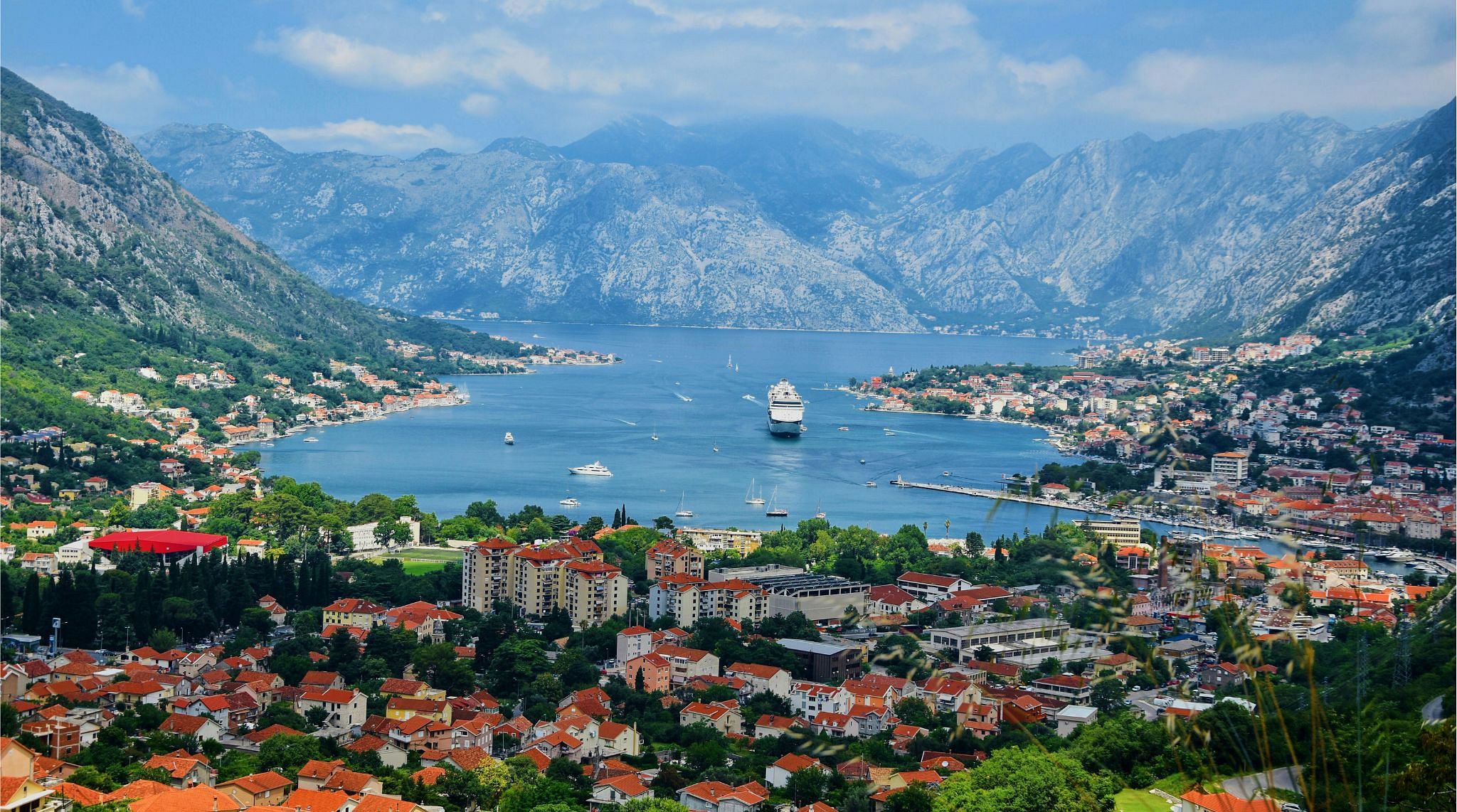 Unsplash
Unsplash
Essential Travel Tips for Montenegro
Travel Documents and Visas
Check Montenegro's visa requirements for your nationality. Most visitors can stay visa-free for up to 90 days. Ensure your passport is valid for at least six months, and keep copies of all essential documents.
Electrical Plugs
Montenegro uses Type C and F plugs, similar to most European countries. Bring an adapter if needed, and consider a voltage converter for your devices.
Language and Currency
Montenegrin is the official language, but English is widely spoken in tourist areas. Montenegro uses the Euro (€), and while credit cards are accepted in most places, having some cash for smaller establishments is advisable.
Health and Safety
Invest in travel insurance that covers emergency medical expenses. Avoid drinking tap water, and carry a basic first-aid kit and any personal medications.
Related: Dubai Travel Guide: Everything You Need to Know
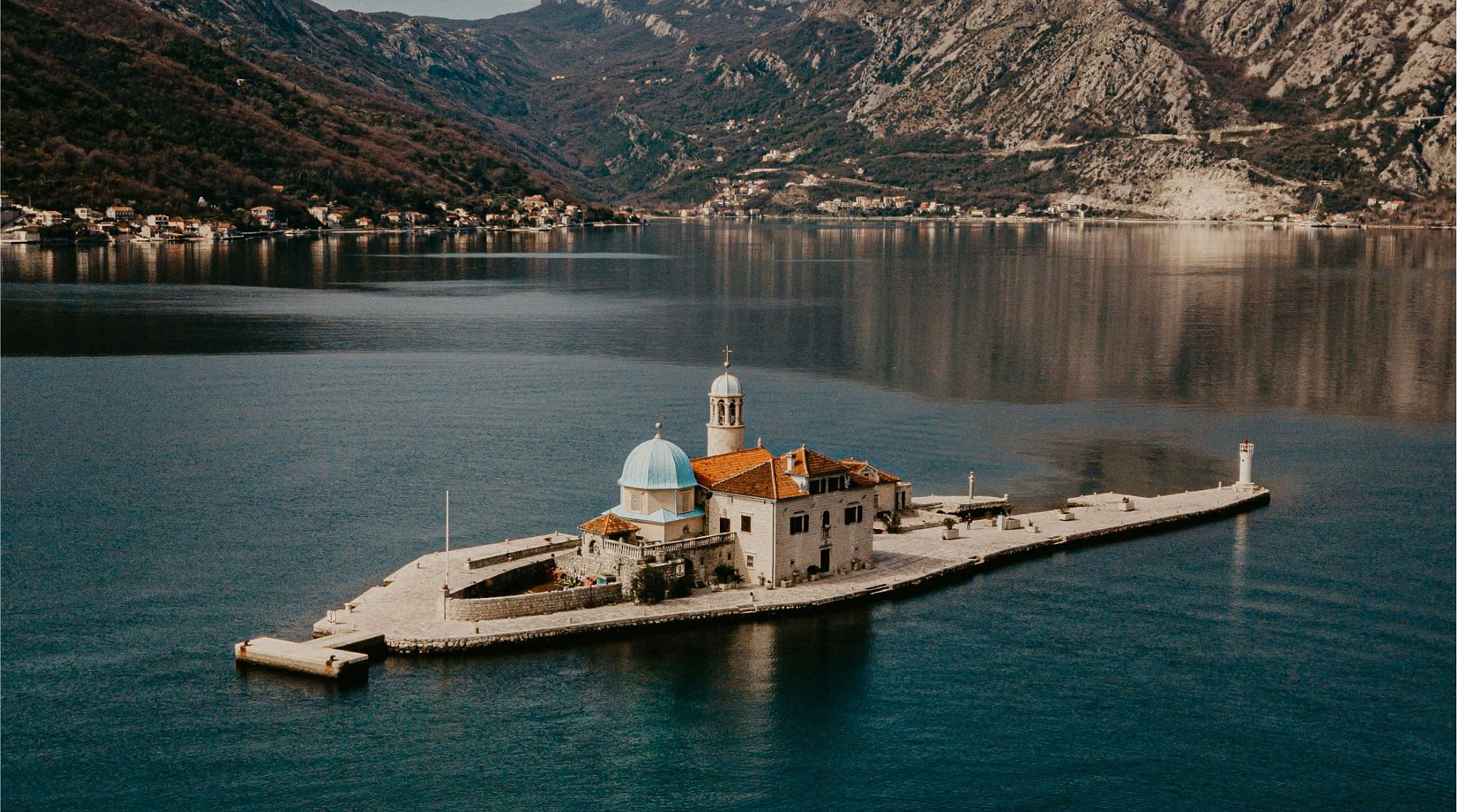 Unsplash
Unsplash
Must-Have Essentials Before Visiting Montenegro
Prepare for Rain
Even during the dry season, unexpected rain showers can occur. Pack a lightweight, waterproof jacket, and consider waterproof shoes for convenience.
Try Local Cuisine
Don't miss Montenegrin dishes like cevapi (grilled meat rolls), kajmak (creamy cheese), and organic (fried dough balls). Explore local markets for fresh produce and homemade delicacies.
Respect Local Culture
Be polite and adhere to local customs. It will be appreciated if you learn a few Montenegrin phrases like "Good morning" (Dobro jutro) or "Thank you" (Hvala).
Join Local Festivals
Attend events like the Budva Summer Music Festival to experience Montenegro's vibrant culture and interact with locals.
Use Public Transportation
You can save money by using local buses for intercity travel. Consider renting a car for more comfort and flexibility, but familiarize yourself with Montenegro's driving rules.
Related: 10 Things to Do in Hatta: Explore the Best Activities and Attractions
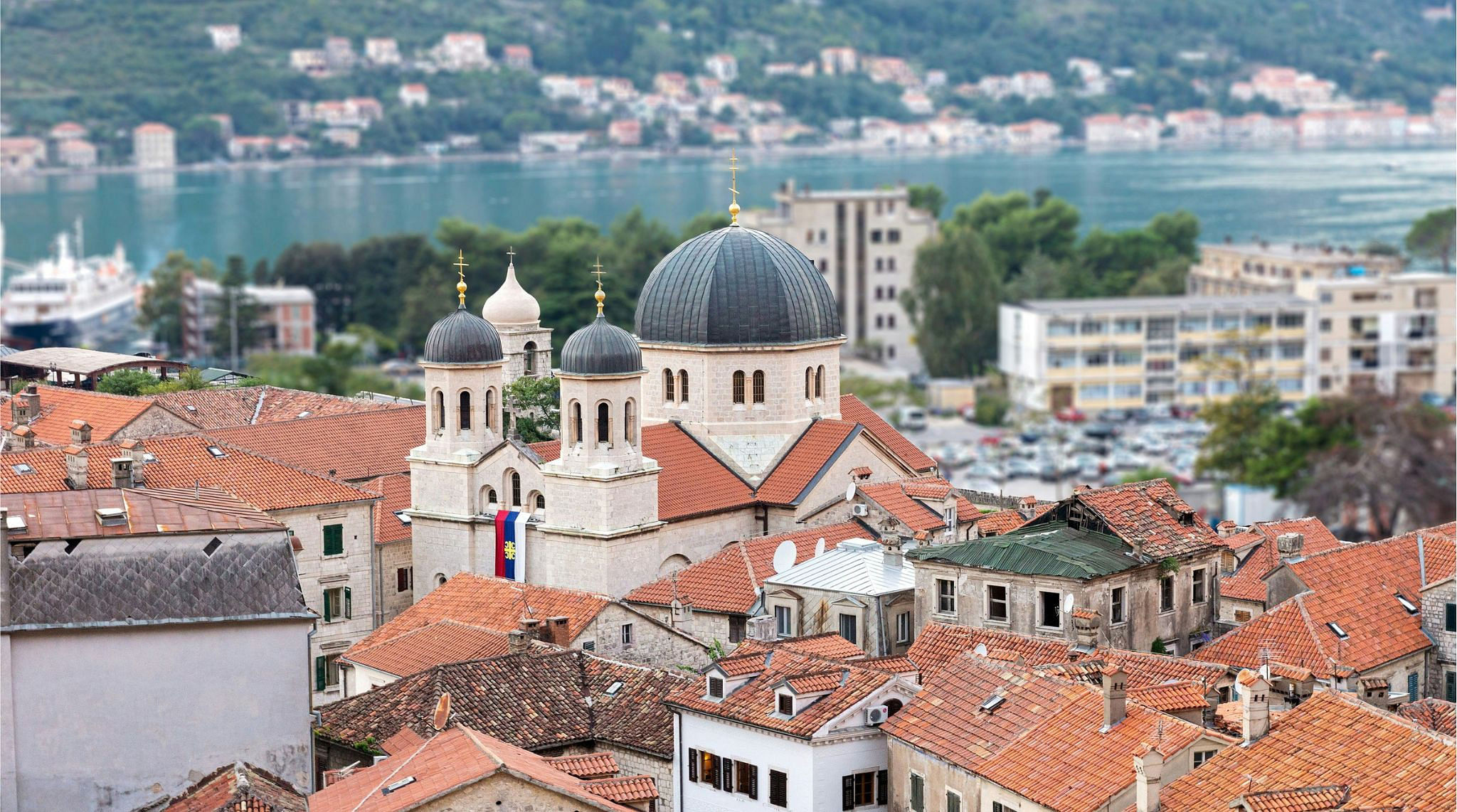 Unsplash
Unsplash
Top FAQs About Traveling to Montenegro
Planning a trip to Montenegro can be challenging, especially if you're visiting for the first time. Below, we've compiled answers to some of the most frequently asked questions to help you prepare for a seamless and enjoyable adventure.
-
How Much Does It Cost to Visit Montenegro?
The cost of visiting Montenegro can vary depending on your travel preferences. On average:
- Accommodation: Budget accommodations, such as hostels or guesthouses, start at around €15-€30 per night, while mid-range hotels cost between €50-€100. Luxury resorts, especially in places like Sveti Stefan or Budva, can go up to €200 or more per night.
- Food: Meals at local restaurants range from €5-€15 for traditional dishes, while fine dining experiences can cost €30 or more per person.
- Transportation: Public buses are affordable, costing a few euros for intercity travel, while car rentals range from €30-€50 per day.
- Activities: Entrance fees for national parks and attractions typically cost between €3-€10. Guided tours, boat trips, or adventure activities like rafting may range from €20-€100.
-
Is Montenegro Safe for Tourists?
Montenegro is considered a very safe destination for travelers. Violent crime is rare, and petty crime like pickpocketing is uncommon but can occur in crowded tourist areas. Follow these essential safety tips:
- Keep your valuables secure, especially in busy towns or on public transport.
- Avoid walking alone in poorly lit or unfamiliar areas at night.
- Be cautious when driving, as some mountain roads can be narrow and winding.
Additionally, registering with your embassy and staying informed about local safety guidelines is always a good idea.
-
Do I Need a Visa to Visit Montenegro?
Visa requirements for Montenegro depend on your nationality. Many travelers, including those from the EU, UK, USA, Canada, and Australia, can enter Montenegro without a visa for up to 90 days within 180 days. Ensure your passport is valid for at least six months beyond travel dates. Travelers requiring a visa can apply at a Montenegrin embassy or consulate. It's always best to check the latest visa regulations before your trip.
-
What Languages Are Spoken in Montenegro?
The official language in Montenegro is Montenegrin. However, many locals also speak Serbian, Bosnian, Croatian, and Albanian. English is widely understood, especially in tourist areas, restaurants, and hotels. Learning a few basic Montenegrin phrases, like "Hello" (Zdravo) or "Thank you" (Hvala), can go a long way in connecting with locals.
-
What Is the Best Way to Get Around Montenegro?
Montenegro offers several transportation options to suit different preferences and budgets:
- Public Buses: Buses are the most affordable way to travel between cities and towns. They run frequently and connect major destinations like Kotor, Budva, and Podgorica.
- Car Rentals: Renting a car is the best option for exploring Montenegro's remote areas and national parks. Be prepared for narrow roads, especially in the mountains.
- Taxis: Taxis are available in cities, but ensure the driver uses a meter or agrees on a fare beforehand.
- Bicycles and Walking: Renting a bike or walking can be a pleasant way to explore smaller towns and coastal areas.
-
What Should I Pack for My Trip to Montenegro?
Your packing list will depend on the season and the activities you plan to do. Essentials include:
- Comfortable walking shoes for exploring towns and hiking trails.
- Lightweight and breathable clothing for summer visits; layers for cooler months.
- A waterproof jacket and sturdy footwear for outdoor adventures.
- Swimwear and sunscreen for beach days or water activities.
- A universal power adapter for electronics (Montenegro uses Type C and F plugs with 230V).
-
What Are the Must-Try Foods in Montenegro?
Montenegro's cuisine is a blend of Mediterranean and Balkan flavors. Some must-try dishes include:
- Njeguški pršut: Smoked ham, often paired with cheese and olives.
- Cevapi: Grilled minced meat rolls served with flatbread and onions.
- Kačamak: A hearty dish made with mashed potatoes, cheese, and cornmeal.
- Buzara: A seafood dish featuring mussels cooked in white wine, garlic, and parsley.
- Palačinke: Thin pancakes filled with sweet or savory toppings.
Pair these with a glass of local wine or rakija, a traditional fruit brandy.
-
What Currency Is Used in Montenegro?
Montenegro uses the Euro (€) as its official currency, even though it is not a member of the Eurozone. ATMs are widely available, and credit cards are accepted in most establishments. However, it is advisable to carry some cash for small vendors, local markets, or rural areas.
-
What Are the Top Festivals and Events in Montenegro?
Montenegro hosts a variety of festivals and cultural events throughout the year, such as:
- Kotor Carnival (February/March): A lively event with parades, music, and local traditions.
- Lake Fest (August): A popular music festival held by Lake Krupac.
- Boka Nights (July/August): A celebration in Kotor featuring boat parades and fireworks.
- Grape Harvest Festival (September): A seasonal event celebrating wine and local produce.
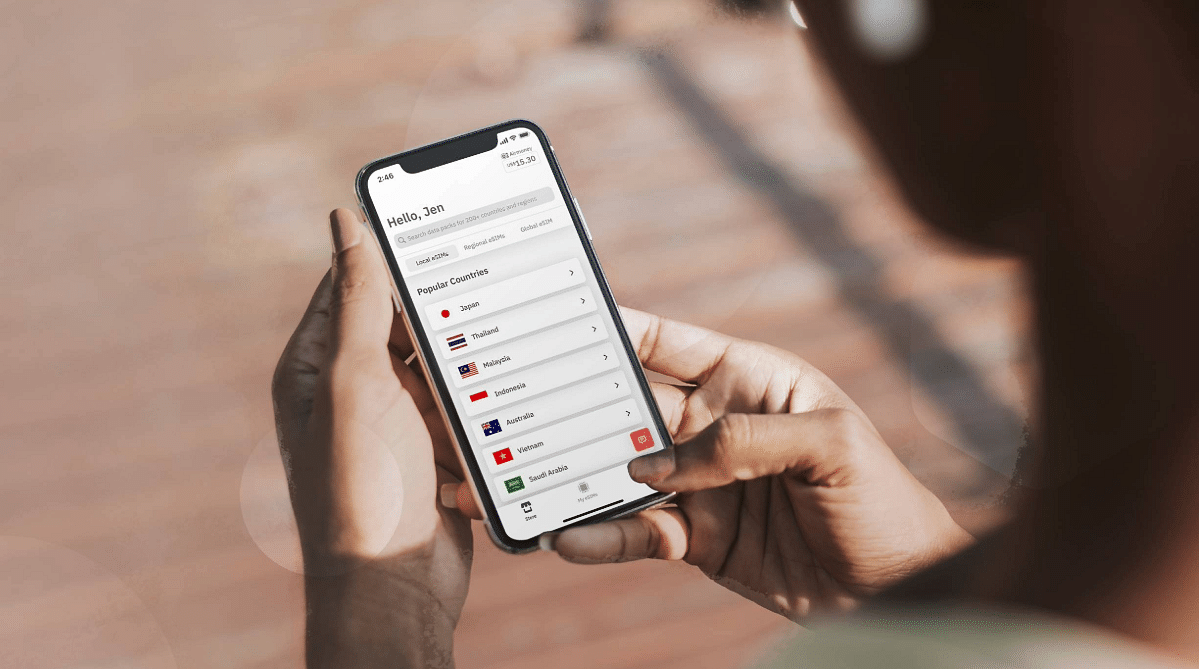
Montenegro eSIM: Stay Connected With Airalo
No matter where you travel, stay connected with an Airalo eSIM. Airalo gives you access to affordable eSIMs for 200+ countries and regions — including Montenegro.
Why Airalo? Here are a few reasons to use an Airalo eSIM when you travel:
- Connect to a mobile network within minutes of arrival.
- Choose from flexible local, regional, and global data plans.
- Eliminate the need to find a local SIM vendor.
- Say goodbye to expensive roaming charges.
- Store multiple eSIM data plans on your device.
- Running out of data? Top up in the Airalo app.
Planning a trip to Mountenegro? Get a Montenegro eSIM to stay connected during your trip.




